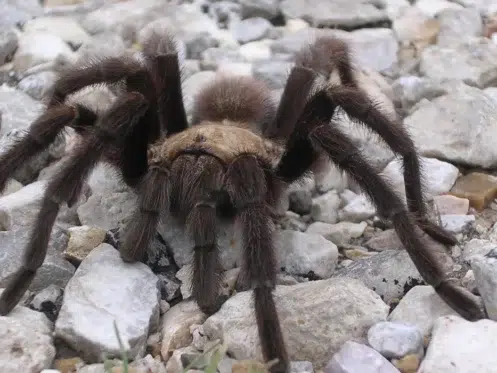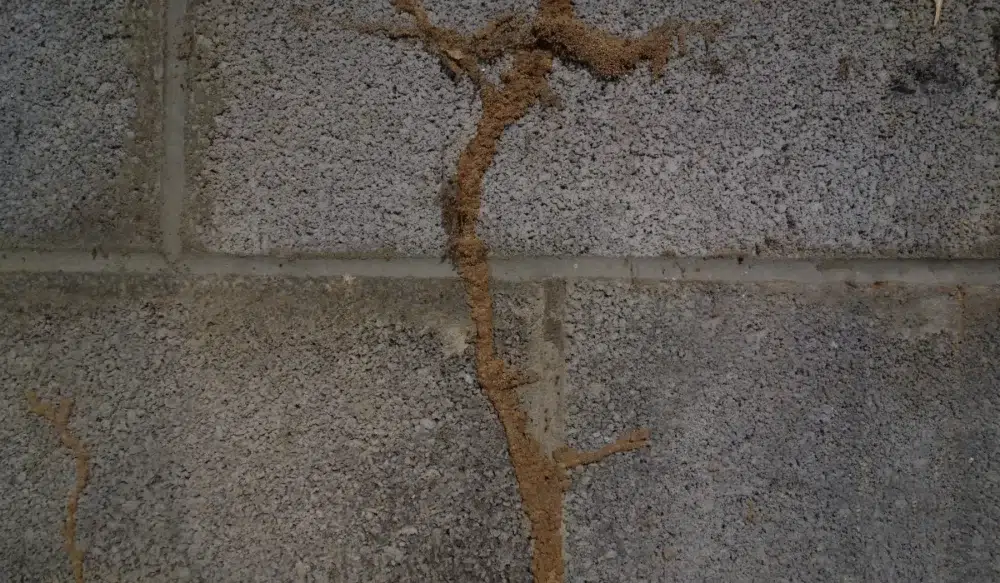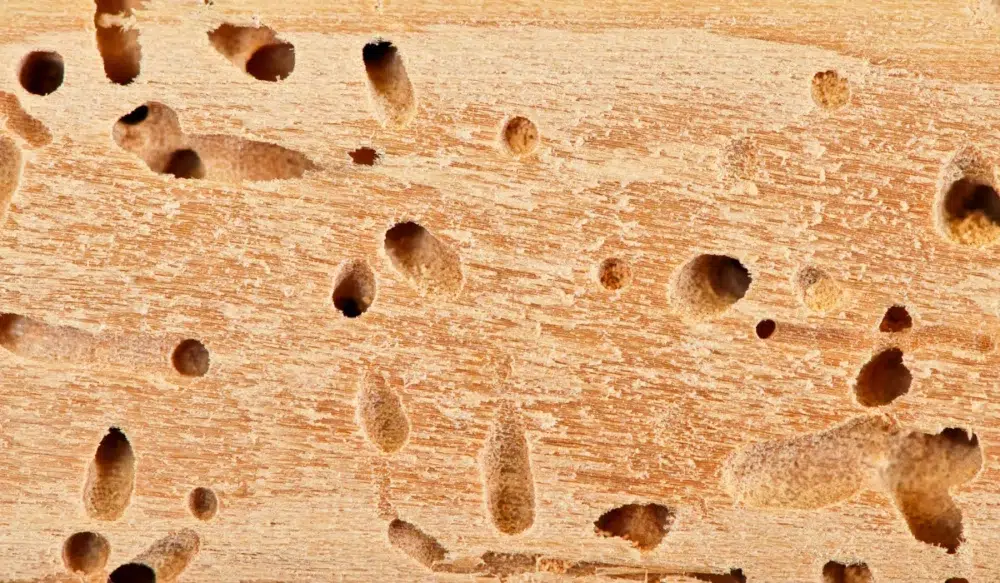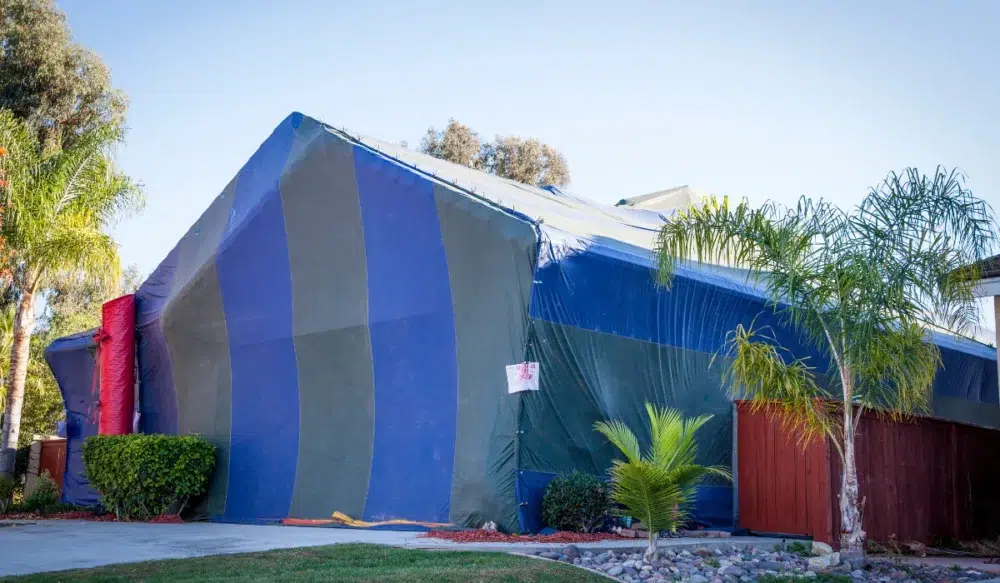In late summer, Arizona homeowners often see more tarantulas, especially in cities like Phoenix, Tucson, Chandler, and Scottsdale. These large arachnids might look intimidating, but their appearance this time of year follows a predictable pattern.
August is mating season, which means more activity and a greater chance you’ll find one wandering through your yard or even your garage.
If you’ve recently spotted one of these hairy spiders around your home, you’re not alone. But is this a sign of an infestation, or is it just part of life in the desert Southwest?
Let’s take a closer look at what’s behind this seasonal behavior and how you can keep tarantulas outside where they belong.
Key Takeaways
- Arizona tarantulas become more visible in August due to mating season.
- Most sightings involve male tarantulas searching for mates, not infestations.
- These spiders are not dangerous and rarely bite unless provoked.
- Homes near open desert or with insect activity are more likely to see wandering tarantulas.
Why You’re Seeing More Tarantulas Right Now
In Arizona, August marks the height of tarantula mating season. Male tarantulas emerge from their burrows and travel long distances across the desert to find females. This wandering behavior explains why you’re suddenly seeing more of them around patios, garages, and entryways.
You’re not dealing with a sudden infestation, just an increase in visibility. These male tarantulas are especially active in the evening and at night, making twilight a standard time to encounter them.
They’re drawn to cooler surfaces and quiet places to rest, which is why garages and shaded corners of your home can become temporary resting spots.
What Kind of Tarantulas Live in Arizona?
The most commonly encountered species of tarantulas in Arizona homes is the Arizona blonde tarantula, also known as Aphonopelma chalcodes. This species is native to the Southwest and easily recognized by its light-colored carapace and darker brown or black legs.
Unlike some spiders that build webs in corners or dark spaces, the Arizona blonde prefers a ground-dwelling lifestyle. Female tarantulas remain hidden in burrows for most of their lives, while males venture out in late summer to breed. Once mating season ends, many males die, having completed their primary role in reproduction.
Another desert dweller you may encounter is the western desert tarantula, a slightly larger species that prefers similar conditions and behaves in much the same way.
Where Tarantulas Hide in and Around Homes
When tarantulas appear in residential areas, they typically seek shelter in the environment rather than in your home. Garages, for instance, provide cool shelter that mimics natural burrows. They also serve as passageways from desert terrain to more shaded residential structures.
You might spot them under patio furniture, crawling along exterior walls, or slipping through poorly sealed doorways.
Tarantulas eat crickets, cockroaches, and other minor bugs. So, if you have those around, spiders may follow. If you notice a spike in insect activity, there’s a chance a tarantula or two might come hunting.
Are Tarantulas Dangerous?
While tarantulas may look like something out of a horror film, they are actually among the largest spiders in North America and are not aggressive. A tarantula bite is uncommon and typically occurs only when the spider feels cornered or threatened. If a bite does happen, most people describe it as no worse than a bee sting. For some, it may result in mild swelling or irritation.
Tarantulas also possess urticating hairs, tiny barbed bristles they can flick from their abdomens when threatened. These hairs can irritate the skin and eyes, but don’t pose serious medical risks.
Compared to more dangerous spiders like the black widow or brown recluse, the Arizona blonde tarantula poses minimal risk. However, if you or someone in your home experiences a bite and has a reaction, it’s a good idea to seek medical attention, especially if the person is sensitive to insect bites.
Why Do Tarantulas Come Inside?
When tarantulas end up indoors, it’s almost always accidental. These large spiders don’t want to be in your home; they’re simply following instinct. But certain features can make your house more appealing:
Homes with open gaps in door frames, unsealed garage doors, or poorly maintained screens are more likely to allow entry. If your property backs up to desert landscape or you live near natural burrows, you may see more spider activity in late summer. Moisture, available shelter, and lots of bugs can make a tarantula want to stay.
Tarantulas are also solitary, so it’s rare to see more than one at a time. Still, their presence might indicate that other arachnids, like wolf spiders or scorpions, could also be nearby, as they thrive in similar environments.
How to Keep Tarantulas Out of Your Home
Preventing tarantulas from entering your home starts with exclusion and maintenance. Seal all cracks and gaps around your doors and windows. Install weather stripping, especially on garage doors. Keep garages and outdoor storage areas free of clutter that could serve as shelter.
Managing insects like crickets and cockroaches can also reduce the tarantula’s food source. A property with fewer prey insects becomes less appealing for spiders and other desert creatures.
If you’re concerned about recurring sightings or think your property has become a hotspot for arachnids, professional pest control services can help. At Green Home Pest Control, we inspect for signs of spider activity, identify possible burrows or access points, and use eco-conscious methods to keep your home protected.
What Makes Arizona Homes More Prone to Tarantulas?
Desert cities like Tucson, Phoenix, Mesa, and Chandler sit near natural habitats for several species of tarantulas. Late summer storms and shifts in humidity also trigger movement from underground burrows to the surface. As a result, it’s not uncommon for homeowners across the Valley to see a black tarantula or a dark brown spider crossing their yard or sidewalk this time of year.
The Grand Canyon region and other parts of northern Arizona are home to additional species of tarantulas and spiders, though fewer of them venture into human spaces. Southern Arizona, with its warm climate and sandy terrain, remains the most active zone for tarantula sightings in residential neighborhoods.
When Should You Call for Spider Control?
If you’re seeing more than just the occasional tarantula, maybe wolf spiders, scorpions, or even a black widow, it may be time to take action. While tarantulas aren’t harmful, the presence of multiple species might point to a growing pest issue.
Green Home Pest Control offers spider control solutions tailored to desert living.
Feel free to call us for a free quote, as our technicians know how to identify spider hiding spots, seal off access points, and recommend practical solutions to make your home less attractive to these eight-legged guests.
Whether you’re dealing with female tarantulas staying in their burrows or male tarantulas showing up in your garage, we can help reduce encounters, and we’ll help keep your home spider-free so that you can enjoy summer without surprise guests.
FAQs
Are tarantulas in Arizona homes a sign of infestation?
Not usually. Tarantulas are solitary spiders, and their appearance in or near homes is often tied to mating season. It’s rare to see more than one, and their presence doesn’t indicate a widespread issue.
What should I do if I find a tarantula in my garage?
Stay calm. Use a container to guide the spider outside if you’re comfortable, gently. Make sure to seal any entry points to prevent future visits. If you’d rather not handle it, call a pest control service.
Can pest control remove tarantulas without harming them?
Yes. At Green Home Pest Control, we use eco-conscious methods to manage spider activity while respecting Arizona’s native species. We focus on prevention, exclusion, and habitat modification to reduce encounters naturally.




